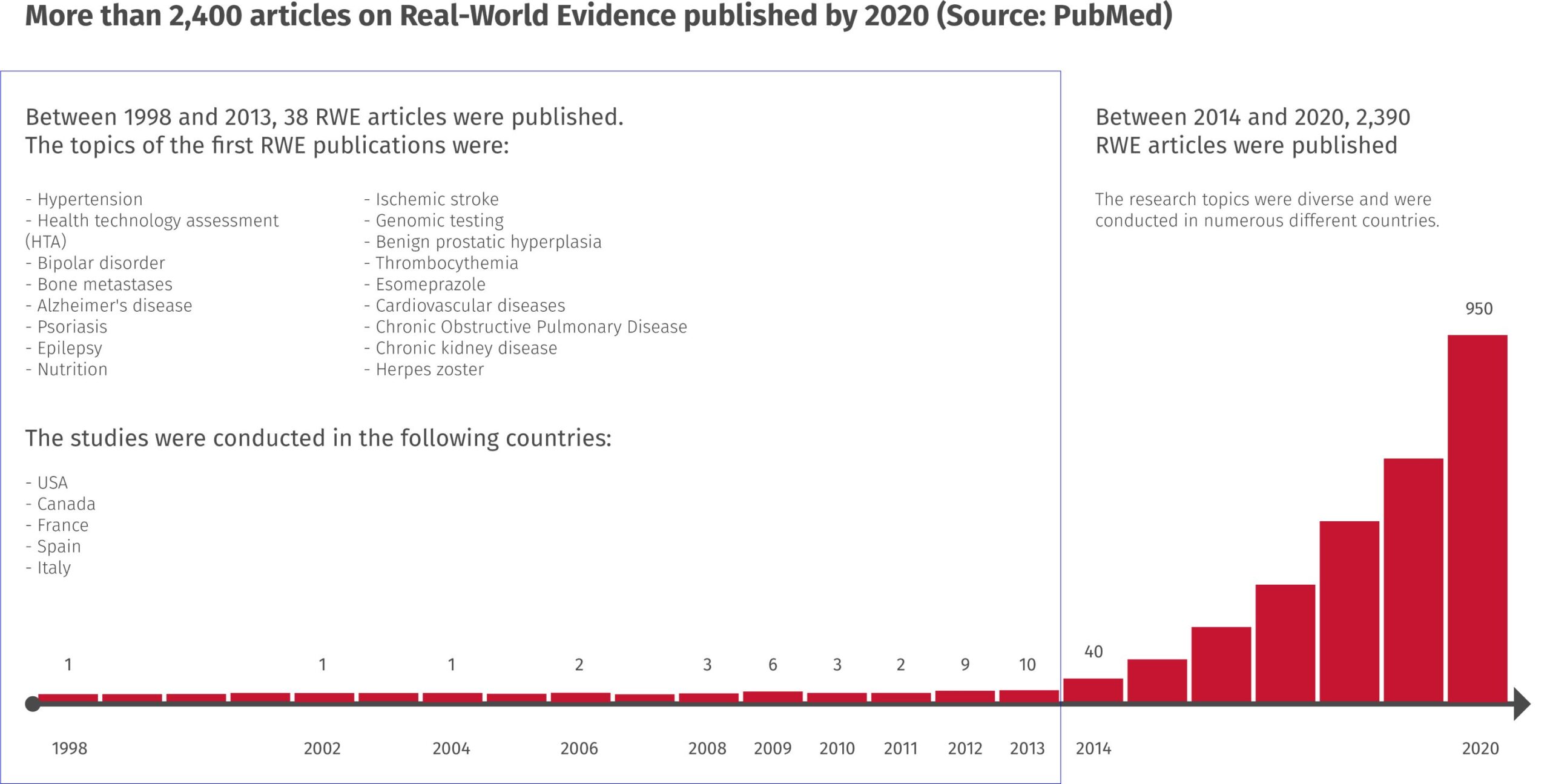History of Real-World Evidence
Real-world evidence (RWE) is relatively young. However, RWE-research has its roots in the traditional registry-based study, which is old. How did the registry study become RWE? Let’s move back to the moments when RWE was born.

Occasionally RWE and registry study are synonyms of each other. The difference between these two might be a slightly more modern twist RWE has as a word when compared to a registry study. Though, at the end of the day they would both mean registry study. RWE and registry study may also differ considerably from one another.
If simplified, modern RWE and traditional registry study stand apart in data collection and -size. In the past, registry study contained lots of manual work because data were collected from patient registries by hand. In addition, the size of a registry study data was often smaller than in todays RWE study.
As electronic registers have evolved, manual data collection or chart review is not popular anymore. Picking up a large number of patients or variables by hand makes no sense. However, not everything has yet been electrified or automated, which is why the research setting may force to extract at least some of the variables manually. Thus, also today registry studies may contain some manual work.
RWE is a chameleon utilizing methods from various fields of sciences. However, RWE has its roots deep in the ground of registry study. My next focus is on determining the birth time of the RWE study.
“RWE study is 17 years old (based on first published research article).”
Most of the RWE-themed scientific articles have been published during the last years. Expansion of the field is mainly due to the development of information technology. It is now technically possible to store, send, and securely analyse big data.
RWE-research is young. To shed light on the birth of RWE-research, I utilized medical publications. I browsed PubMed using specific key words.
Before the 21st century, the term “real world evidence” was also used in articles that were not exactly RWE publications. Since 2010, the term has rarely been used in medical publications to describe a different context than RWE.
The first RWE-themed publication I found was from 1998. The article written by Caro & Speckman addressed a topic that is relevant even today – i.e. the difference in clinical trial data from real-life information. However, this is a review article, not an original study. That’s why I’m not counting this as the birth of RWE.
The first RWE-themed research article was published in 2004. This article discussed the use of lamotrigine in the treatment of bipolar disorder (Simons & Krishnan).
The search utilizing words “real-world data” includes publications already from the 1980s. As an example, a review article from 1988 (Ronis & Harris) discusses the use of medical services. However, the real-world data used in this article is patient data collected through surveys, not patient registry data.
“Almost 1000 articles were published on RWE last year. What will be the number of this year?”
As a discipline, RWE has progressed and grown rapidly. Growth of the field may be reflected in the fact that more than a third of all RWE-studies were published last year.
The image below illustrates the growth rate RWE has. In the graph, the height of the bars indicates the number of studies found under the search terms “real-world evidence” , with the x-axis describing time (source: PubMed).
More than 2 400 RWE-studies were published by the year 2020. Of these, 950 were published in 2020. By contrast, only 38 RWE studies were published between 1998 and 2013. It was not until 2014 that more than twenty RWE studies were published within a single year.
The first RWE studies covered issues such as bipolar disorder, Alzheimer’s disease and psoriasis. Most frequent RWE releases came from the United States at the turn of the 21st century.

Conclusions
RWE is so young that you won’t need to do archaological investigations to find its roots. RWE research was born in 2004. This 17 years old youngster has developed and grown up fast.
Interest in RWE has grown exponentially over the past ten years. Most of the publications on the topic have appeared in previous years. In 2020, nearly 1 000 RWE-themed scientific articles were published.

